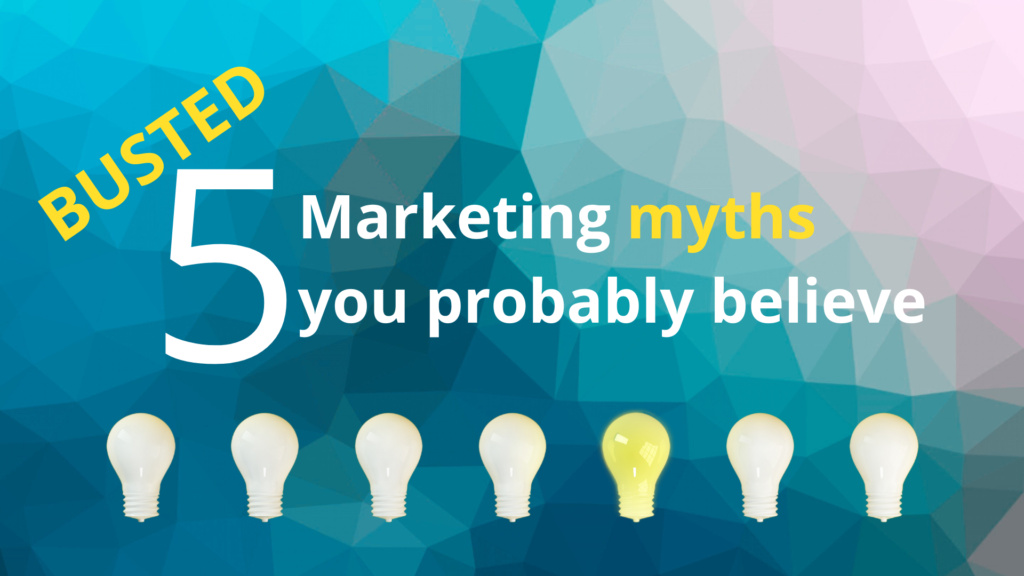
Marketing practices are evolving by the minute and we all seem to be perpetually chasing them down the road. However, even with all of us agreeing on this reality, many marketing professionals are sticking to static assumptions when it comes to marketing or its close cousin consumer behavior.
Societies and markets are ever-evolving, rendering common practices ineffective.
While the list is huge, I am only busting—or clarifying—five in this post.
1-Sexy works with a limited variety of products
Sex is a powerful subliminal communication tool. Humans respond to it on a primal—and mostly subconscious—level. This makes it the easiest and most direct way to ensure the success of an advertising campaign. We’ve seen it with cigarettes, perfume, and luxury cars.
But use it for real estate and you’ve made a huge mistake. If I am looking for an investment haven, or a solid community to raise a family in, a sexy woman isn’t sending me the right message.
Decision-intensive products and services require authority and trust, something sex doesn’t communicate.
Other examples would be banks, lawyers, or asset management companies. Adding sexy or primal elements to any advertisement campaign would negatively impact the value they need to communicate to their potential clients.
2- No, the customer doesn’t know what he wants
Henry Ford once said, If I had asked people what they wanted, they would have said faster horses.
The customer knows his problem but not always the right solution. A company and its experts are more equipped to solve problems. It is, however, also upon them to explain to potential buyers why their products and services offer the right solution.
3- We need to market to everyone because anyone can be our customer
I cringe when someone says that. This statement attacks marketing and buyer psychology at their very core.
No matter how universal you think your product is, not everyone is your target audience. Not only that but you end up investing a lot more time and money only to weaken your results.
For example, you launched a supermarket chain. As a start, your target audience will be specifically the customers in your geographic location and buying bracket. You will then need to narrow down to buying profiles, are you offering vegan products? do you stock a good variety of premium products? and so on. Every single question adds or subtracts from the core-buyer base you should target.
Customers who shop premium are difficult to attract from supermarkets that brand themselves as premium, while health-seekers have invested time building a list of go-to stores that they are comfortable with. They may pass by your store but you will lose a lot by not tailoring your brand to appeal to a more specific consumer base.
Not convinced? Let’s talk money, if you launch a campaign targeting 1 million potential customers you will still end up with the same 60,000 customers you were going to attract in the first place, but now you have invested a lot more and ended up with weaker reliability ties to the clients you acquired.
Of course, there’s a distinction here between Facebook followers and your actual customers.
4- Customers want more choices
The more options you offer clients the higher the likelihood of decision fatigue, or worse a false sense that there’s still a better option out there.
For example, you walk into a store and your favorite T-shirt is available in red, black, and blue. Now imagine the same shirt is available in 16 different colors.
On the surface, having more choices seems like a good thing. If you offer a large variety of products your clients are more likely to find their exact needs. However, that’s not exactly true. In consumer behavior, there’s a concept known as “the paradox of choice”, where the more options you offer a human the less satisfied they will be.
That said, we always like to feel that we are in control of our buying decisions and have countless options. That’s why it’s advised to offer your clients limited and suitable options, with a key choice among them that is the most appealing. That’s why many SaaS companies tend to offer three tiers: a high, low, and middle, with the latter being an obvious choice offering the most value for money. This leaves customers feeling like they have secured a great deal for themselves.
5-Consumer decision-making is a rational and linear process
This is a big one! Nothing could be further from the truth.
We like to think our buying decisions are rational, at least when it comes to significant decision-intensive purchases. But humans are creatures of emotion, memories, and impulse. Few, if any, decisions are made in isolation of what is going on around us.
The AIDA (Attention, Interest, Desire, Action) advertising model is still widely used to explain the consumer decision process. However, experiments by behavioral economists suggest that buying decisions are much more complex than that, with subconscious psychological goals controlling a significant part of our buying decision.
An article by Neal Cole, founder of Conversion Uplift, a marketing consultancy, explains it best. He describes the consumer decision process as a leaky bucket rather than the straightforward AIDA funnel. His diagram explains how complex buying decision process is.

Your target consumer will make his decision based on his memories, what others think, common practices, his emotional state, his desires, visual and other sensory input, and many more factors significantly clouding the small percentage of rational decision making that is somewhere in the mix.
This list was originally 10 busted myths, if you want to check the full list go to our Instagram account where I summarize the rest in a series of posts labeled 10 Unpopular Opinions.
If you haven’t already guessed, consumer behavior is one of my passions as it explains how complex we humans really are. If you want a funny take on that, check this post about funny and creepy consumer behavior studies.
[adinserter block=”1″]
